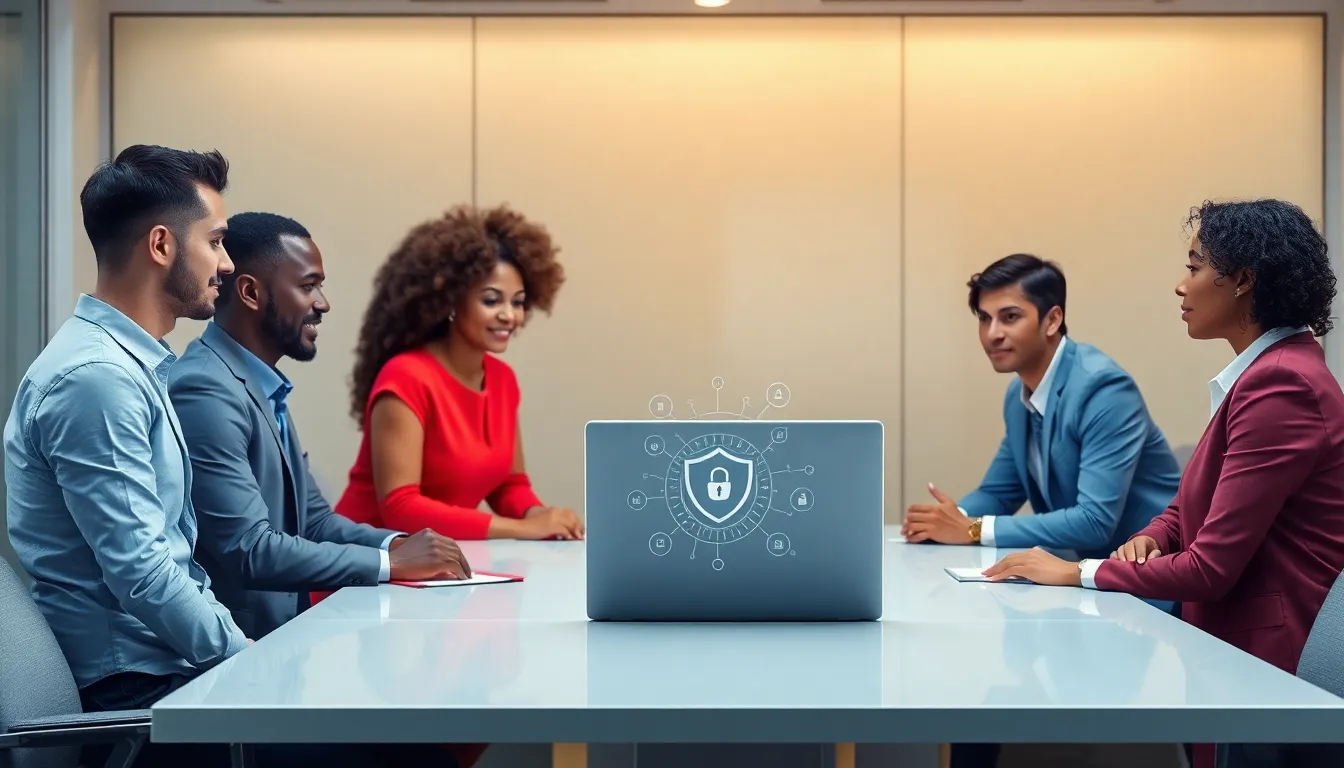In a world where cyber threats lurk around every digital corner, protecting your software is like fortifying a castle against a dragon—except this dragon has a keyboard and a penchant for chaos. Enter EndBugFlow, the software that promises to streamline your workflow while keeping those pesky bugs at bay. But just like any good superhero, it needs a solid shield to fend off the villains of the cyber realm.
So how can you ensure EndBugFlow stays safe and sound? It’s all about layering those defenses like a well-crafted lasagna. From robust encryption to regular updates, there are plenty of strategies to keep your data secure and your software running smoothly. Let’s dive into the essentials of protecting this powerful tool, because in the battle against bugs, it’s always better to be prepared than to be the punchline of a bad tech joke.
Table of Contents
Togglehow endbugflow software can be protected
EndBugFlow serves as a comprehensive solution designed to enhance workflow efficiency while minimizing bugs. This software automates processes, providing users with streamlined operations that target project management and bug tracking. Its functionality includes real-time collaboration, which helps teams stay updated and aligned on project goals.
Advanced features of EndBugFlow focus on integration with existing development tools. Users benefit from seamless interactions with applications like GitHub and JIRA, promoting a cohesive work environment. Enhanced user interfaces make navigation straightforward, reducing the learning curve for new team members.
Security remains a core priority for EndBugFlow. Robust encryption protects sensitive data, ensuring that project information remains secure from unauthorized access. Regular updates bolster this security, addressing potential vulnerabilities as they arise. Implementing user authentication adds another layer of protection, confirming that only authorized personnel can access critical functions.
Additionally, user support is readily available, offering resources like documentation and online forums. These platforms encourage users to share insights and troubleshoot common issues. Data analytics within the software allows users to monitor performance metrics, making informed decisions based on real-time feedback.
EndBugFlow is an essential tool for teams aiming to enhance productivity while safeguarding their work. Strengthening defenses against potential cyber threats guarantees that projects remain secure and successful.
Common Threats to Software Security

Software security faces numerous threats that can compromise sensitive data and operational integrity. Recognizing these threats is crucial in developing effective protection strategies for EndBugFlow.
Malware and Cyber Attacks
Malware poses significant risks, targeting systems to steal data or disrupt operations. Ransomware, a type of malware, encrypts files and demands payment for their release, severely affecting business continuity. Phishing attacks trick users into revealing credentials, leading to unauthorized access. Additionally, distributed denial-of-service (DDoS) attacks overwhelm systems with traffic, resulting in extended downtime. Protecting EndBugFlow involves employing robust antivirus solutions, firewalls, and regular vulnerability assessments to identify potential breaches.
Insider Threats
Insider threats arise from current or former employees and can be intentional or accidental. Negligent employees may inadvertently expose sensitive information through careless actions, like mishandling login credentials. In some cases, disgruntled workers may exploit their access to harm the organization or steal proprietary data. Establishing strict access controls limits the information available to individuals based on their roles. Coupling this with employee training on security best practices reduces the risk of insider incidents and strengthens the overall security posture of EndBugFlow.
Strategies for Securing Endbugflow Software
Securing EndBugFlow software requires proactive measures. Focus on strategies that enhance defense against cyber threats.
Regular Software Updates
Timely software updates significantly improve security. Developers frequently release patches that address vulnerabilities, making updates essential for protecting against exploits. Organizations must implement a routine schedule to check for software updates at least once a month. This practice reduces the risk of leaving known vulnerabilities open to attack. Users benefit from features and improvements as well, enhancing overall functionality. Systematically updating also reinforces confidence in EndBugFlow’s security, sustaining a safe environment for sensitive data.
Implementing User Access Controls
Establishing strict user access controls protects sensitive data effectively. Role-based access ensures that only authorized personnel can access specific features and information. Organizations should implement a least privilege policy, granting users only the permissions necessary for their roles. Regular audits help identify and revoke outdated access rights promptly. Training employees on secure practices further fosters a culture of security awareness. These measures significantly mitigate insider threats, bolstering the overall security of EndBugFlow software and its users.
Best Practices for Data Protection
Protecting data within EndBugFlow requires implementing several best practices to mitigate risks effectively.
Encryption Techniques
Encryption serves as a frontline defense against unauthorized access. Using advanced algorithms like AES-256 ensures data remains secure both in transit and at rest. Encrypting sensitive files before sharing reduces exposure during collaboration. Regularly updating encryption methods adds an additional layer of security, keeping pace with evolving threats. Leveraging end-to-end encryption capabilities in communication tools enhances confidentiality. Adopting multi-layer encryption strategies can further protect data by employing different encryption methods for various types of data.
Backup Solutions
Regular backups act as a safety net against data loss. Utilizing cloud storage solutions can simplify data retrieval and ensure accessibility. Automated backup systems provide peace of mind by reducing human error during the backup process. Implementing a versioning system allows recovery of previous files, which can mitigate the impact of ransomware attacks. Establishing a regular backup schedule ensures consistency and reliability. Testing backup restoration processes confirms data integrity and usability in emergencies.
Wind-up
Protecting EndBugFlow software is essential for maintaining workflow efficiency and safeguarding sensitive data. By implementing strong encryption methods and ensuring regular updates teams can significantly reduce vulnerabilities.
Establishing strict access controls and fostering a culture of security awareness among employees further enhances protection against insider threats. Regular backups and a robust recovery plan are crucial for data integrity.
With these measures in place EndBugFlow users can confidently navigate their projects while minimizing risks. Prioritizing security not only fortifies the software but also empowers teams to focus on productivity and innovation.





